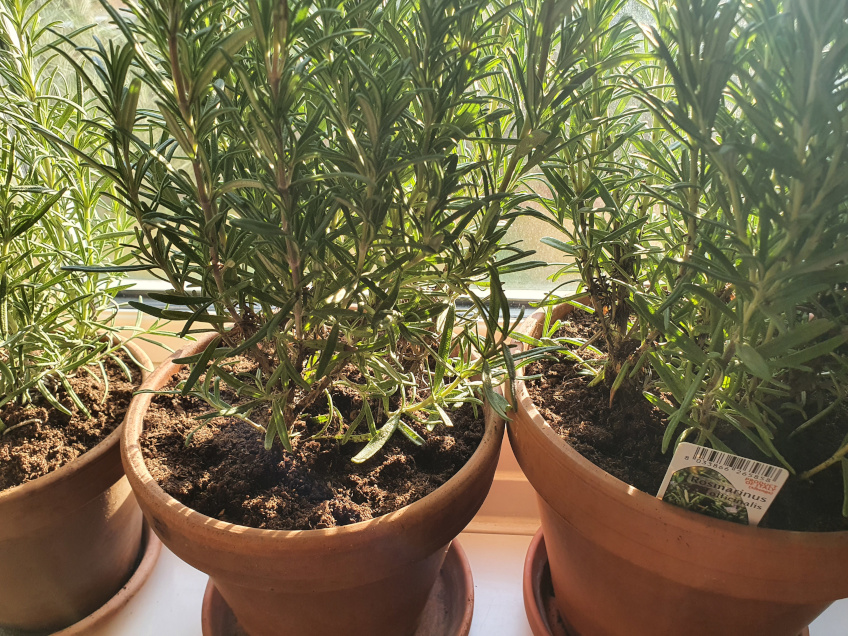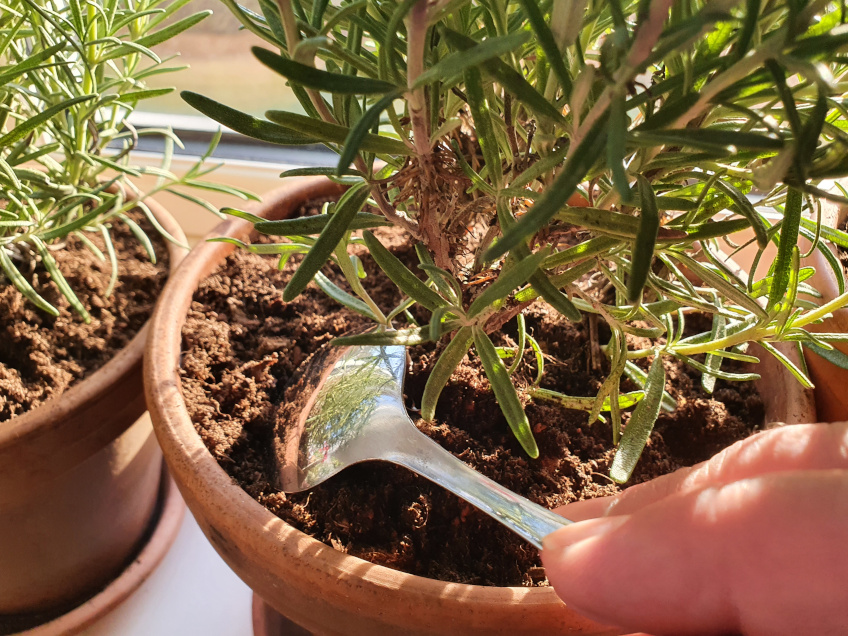This post contains affiliate links.
Rosemary is one of the most popular herbs to grow at home. Of course, its excellent taste and smell are two of the reasons why so many people love it, but also because it is a relatively easy plant to grow and keep alive for a long time. One of my favorite things about rosemary plants is that they can be kept alive for many years. But what exactly is the lifespan of a rosemary plant?
The lifespan of rosemary is generally between 10-20 years. However, how long each plant will live depends on the conditions it has, and the better the conditions are, the longer the rosemary plant will live and the larger and faster it will grow.
Since rosemary is one of my personal favorites, I have done quite a bit of reading to learn as much as possible about how long the plant will live and how you can take the best care of it to keep it alive for as long as possible. I cover all of that in this article.

What is the Lifespan of a Rosemary Plant?
Rosemary is a robust perennial herb that can live for many years under the right conditions and will usually do well even under slightly rough conditions.
How old do rosemary plants get on average, and how old can they get under the right conditions?
The average lifespan of rosemary plants is ten years, but if taken proper care of, the popular perennial herb can live for as long as 20 years under the right conditions.
I have often wondered if my rosemary would survive the winter when the amount of sunlight it can get is limited, and the temperatures are not ideal either, but to my pleasant surprise, my rosemary has survived several winters and been alive for multiple years.
As a native to the Mediterranean and Asia, rosemary thrives with direct sunlight and warm temperatures, but it can actually grow really well in most parts of the world, as it is pretty hardy and resistant to cold temperatures.
Naturally, the better you take care of your rosemary plant and the better its growing conditions are, the longer it will live and the faster and more prominent it will grow.
Below, I will describe the best growing conditions for rosemary to thrive so that you can know if and how you can optimize something to make your plant grow better and live for even longer.
How to Make Your Rosemary Live for as Long as Possible
Rosemary plants generally live for about ten years on average but can live for up to 20 under the right conditions.
Giving your rosemary the right conditions is without a doubt the most important thing you can do to increase its life expectancy, but it also plays a crucial role in how fast and how large the plant grows, so that being said, I will cover exactly what conditions rosemary grows best under now.
These are the best conditions for rosemary plants to live and be healthy for a long time and to grow large:
| Direct sunlight | 6-8 hours per day |
| Temperature | 68-86 F (20-30 C) |
| Watering | In a pot: Weekly In the ground: Every two weeks at most |
| Fertilizer | Every 1-2 months or never |
| Soil | Slightly alkaline (7-8 pH) |
I encourage you to read this post, where I go more into depth with each of these growing conditions.
As mentioned earlier in this post, rosemary can survive under quite rough conditions and will even survive frost in the winter in most of the world, although you might have to cover it to keep it warm at night.
I live in an area where the winters are pretty unreliable. Sometimes the temperature barely drops below the freezing point, but other times it can get as cold as 0° F (about -18° C) or even colder where I live.
If you, like me, live in an area, where the winters can get cold, I have an easy trick you can use to help your rosemary plants through the cold nights.
It can be beneficial to cover your rosemary plant at night or during rough weather in the winter to reduce the risk of damage from frost. During days with mild, but cold weather, the rosemary plant should not be covered as it needs to absorb any sunlight there is.
Plant covers are easy to use and can be bought cheaply from most plant nurseries or garden centers, but you can also find them online.
Avoid These Common Mistakes That Can Kill Rosemary

Giving your rosemary plant proper growing conditions is of course the key to keeping it alive for a long time, but there is more to it.
Many people, including myself, occasionally experience some problems with their rosemary plants that must be taken care of to keep the plant alive.
I will cover the most common issues that kill rosemary plants here, so you know precisely what to look for and what to do if it happens. For a full list of common problems with explanations of how to solve them, go to the article on this link.
Overwatering rosemary
Overwatering is one of the most common mistakes people make when growing rosemary.
Fortunately for you, I have also made this mistake multiple times over the years, so I have, of course, spent some time figuring out what to do when you overwater rosemary.
Luckily, saving an overwatered rosemary plant is not so difficult, so there is no need to worry. If you catch it early, you can almost always save your rosemary after overwatering it.
The key to saving overwatered rosemary is to remove brown, dead leaves and branches and then make sure the plant is growing in well-drained soil. It is best to water rosemary on a consistent schedule, as it grows best in soil that is moist but not dry or wet.
If you give your rosemary too much water for an extended period, the roots will likely begin to rot, which will eventually kill the plant if you don’t do anything about it. Lucky for you, I have written this post that covers exactly how to save overwatered rosemary.
Underwatering rosemary
As mentioned above, rosemary grows best in moist soil, and if the soil gets too wet, the roots will eventually rot, which kills the plant.
Underwatering rosemary can be at least as deadly as overwatering it because if the plant grows in completely dry soil, the plant is naturally not able to absorb any water and nutrients, which will kill it perhaps even faster than overwatering.
To avoid underwatering rosemary, make sure to water it on a consistent schedule every 1-2 weeks. Young, small plants need more frequent watering than larger, well-established plants, but in smaller doses.
Overfertilizing rosemary
Unlike most other garden herbs and plants, rosemary does not like a lot of fertilizer.
Of course, you should never over-fertilize any of your garden plants, but rosemary is especially delicate when it comes to fertilizing.
When it comes to fertilizing, rosemary thrives on neglect and should be fertilized just once per month or even more rarely. Luckily, it is pretty easy to notice when rosemary has gotten too much fertilizer. Here is how:
When rosemary is getting too much fertilizer, the leaves will often begin to turn yellow, so if you notice that this is happening, stop using any fertilizer on your rosemary plant for at least a month to see if the leaves begin to turn green again.

